SUMMARY
This is AI generated summarization, which may have errors. For context, always refer to the full article.
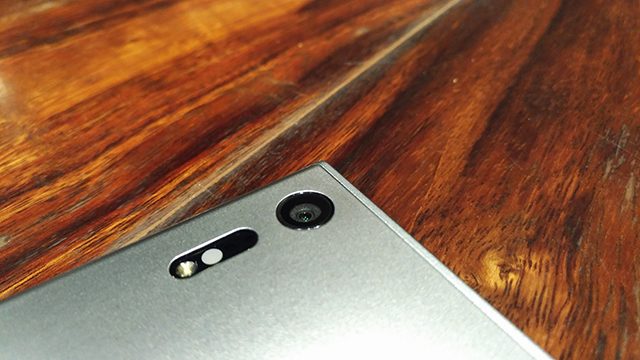
MANILA, Philippines – On Tuesday, October 19, Sony previewed their flagship phone, the Xperia XZ, a 5.2-incher with the top-flight specs expected in the segment and a P38,000 price tag. It’s available now for pre-orders and will arrive in stores on November 18, 2016.
The XZ arrives at a good time. The race for smartphone supremacy is fairly open this time of the year. The top brands are facing issues and some criticism. Google’s Pixel phone is seeking to shake things up but a local release hasn’t been announced. Younger brands are continuing to feed the market with budget-friendly offerings. Especially with Christmas around the corner, the good-looking XZ is in a position to steal some of the attention from consumers looking for a new top-tier handset.
What might make you strongly consider the phone? Its proposal to be the best phone at capturing action shots. Nowadays, it’s expected for premium phones to feature stunning resolutions and rich colors. The XZ, based on our short time with it so far, fairly has that down pat. The photos look good. But what’s not always expected is this: the feature set to capture moving subjects. Typically, you’d want to bring out a proper DSLR if, say, you want to take photos of children, pets or sporting activities.
The XZ presents itself as a device that can be relied on for such instances. It’s been given a slew of focusing and stabilization technologies and manual settings to accommodate action shots.
Stress test
To prove their point, Sony had media sit down in front of two teppanyaki chefs.
Have you ever been at a teppanyaki restaurant where a chef does culinary acrobatics in front of you? If you have, have you ever said to yourself, “Man, I wish my phone could capture all that onion-chopping action”? No? That’s all right. We’ve never thought of it too.
Sony did though. They had chosen the setting for two things: it was dark and the subjects were moving fast. It was an indoor setting with no strong light source apart from the occasional burst of flame from the skillet. In short: the worst place for most phone cameras – save for the best ones – to be in.
As the chefs started their routine, I spammed the shutter button on the touchscreen, hoping to approximate how the regular person excited by such a spectacle would use such a device. If I had more in-focus shots more than blurred ones, I would consider the experiment a success. I took about more than a hundred photos all in all, sometimes shifting rapidly from one angle to another to give the phone a little stress test.
Reviewing the photos, the majority were definitely usable. That’s pretty good, given the challenging venue. See for yourself:
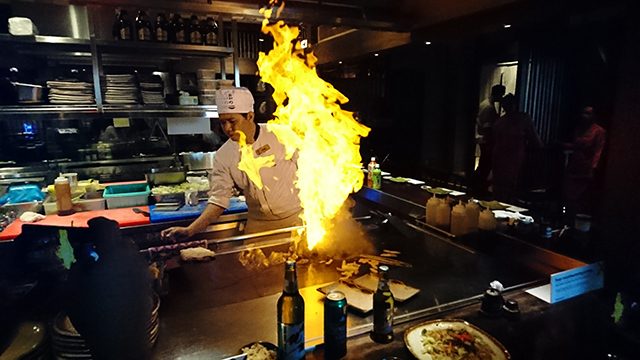
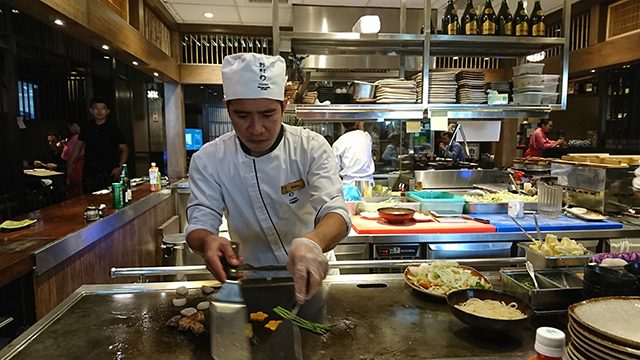
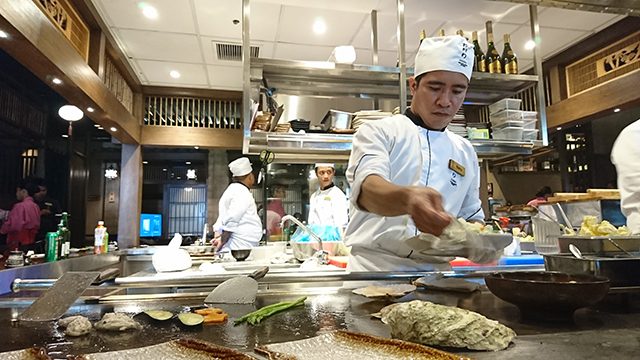
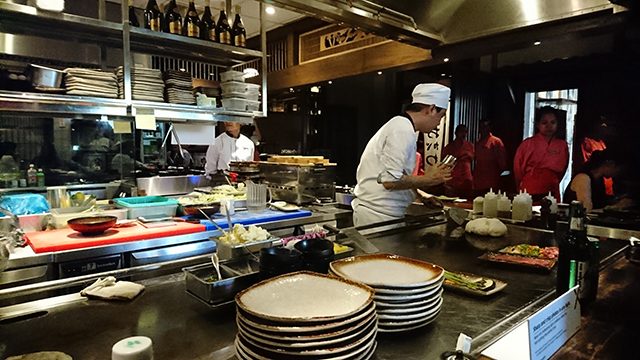
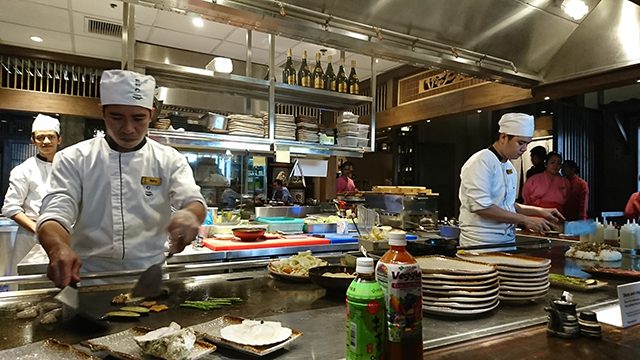
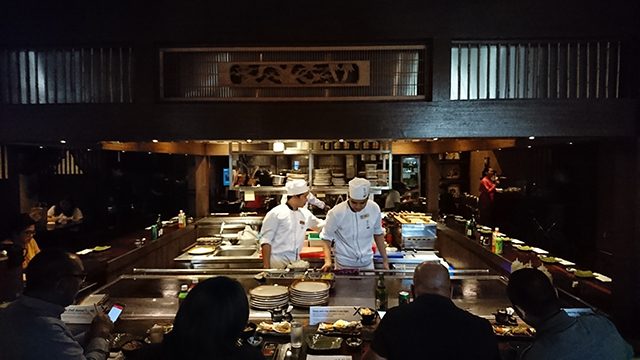
Here, you’ll see shots taken in succession to give you an idea of the phone’s speed at processing images:
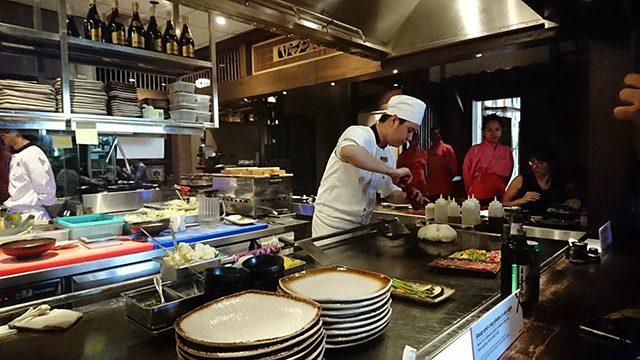
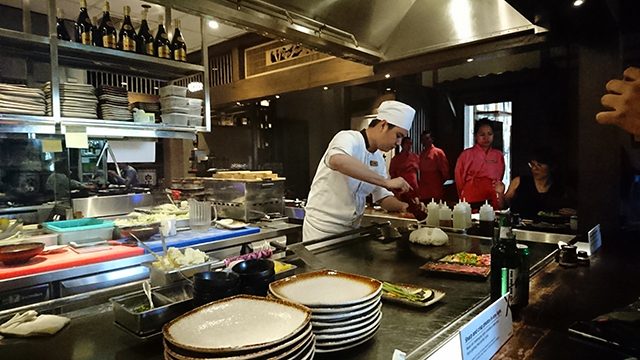
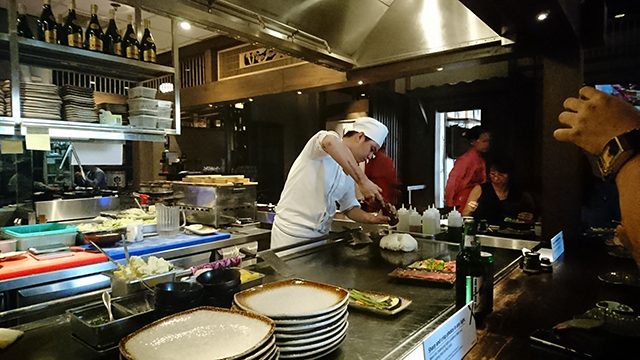
At one point, the chef performed tricks with an egg. Here’s how the camera fared in that sequence, making use of multiple settings. On default auto settings, here’s how it looked:
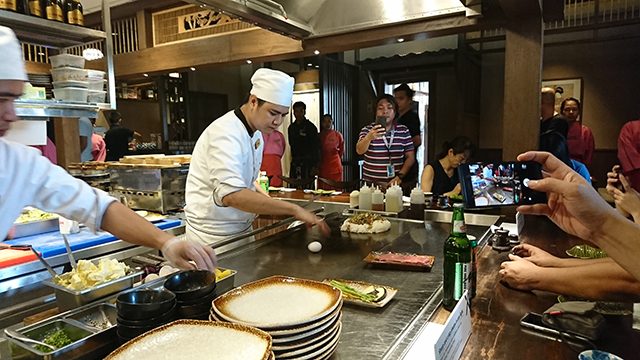
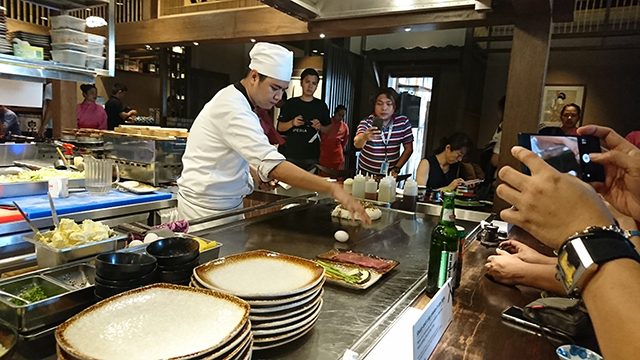
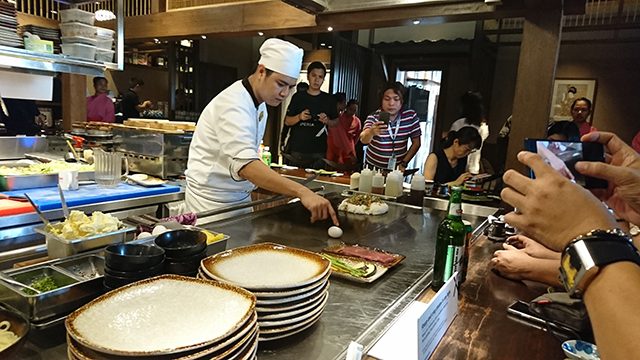
Hoping to freeze the action – specifically, to capture the egg in mid-flight – I tried out some of the camera’s manual settings. The XZ allows you to set the focus and also the shutter speed manually from 1/4000 of a second to 1 second. I set the focus zone to where I believed the egg was going to be tossed around in, and then set the shutter speed to around 1/500 upwards.
On a high shutter speed, there’s less light coming into the sensor, explaining why the photos below are very dark compared to the photos above. But my focus here was to see if I could quickly adjust the settings to take a snap of the egg in mid-flight. Here are 2 shots:
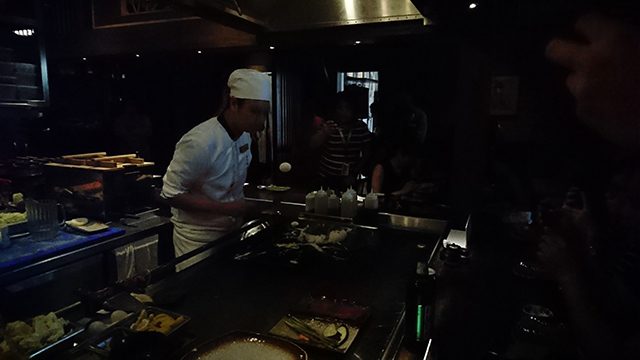
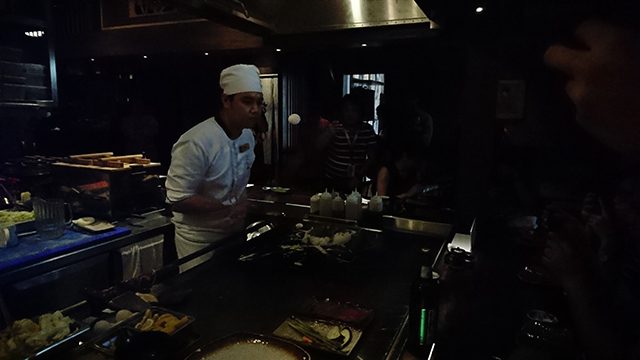
Dialing down the shutter speed, we get a brighter photo but also lose the ability to freeze the action, resulting in motion blur – an effect that has its aesthetic applications.

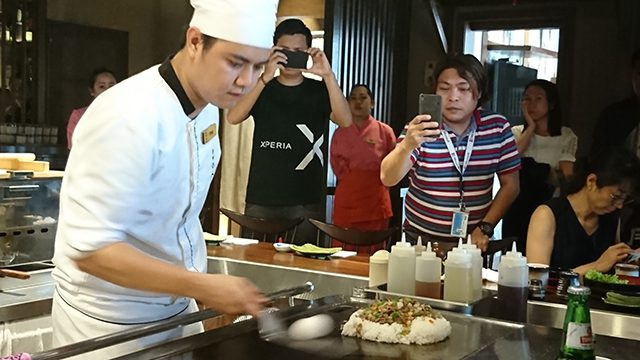
In another sequence, the chef tossed around a cup of rice. I tried to look for the sweet spot where the action could be frozen while still leaving the other subjects such as the chef visible.
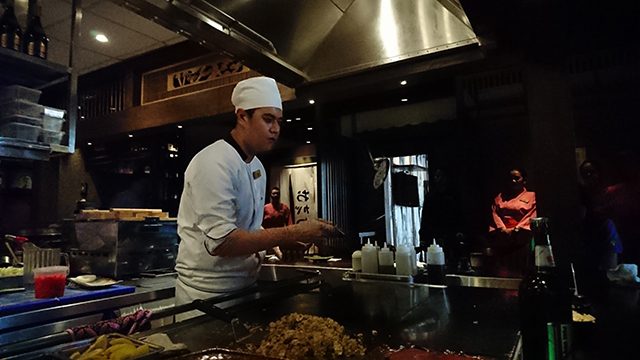
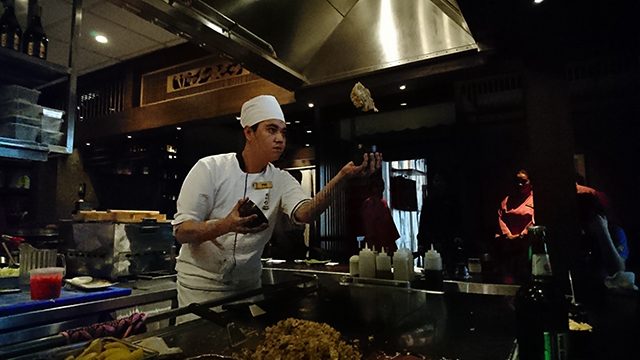
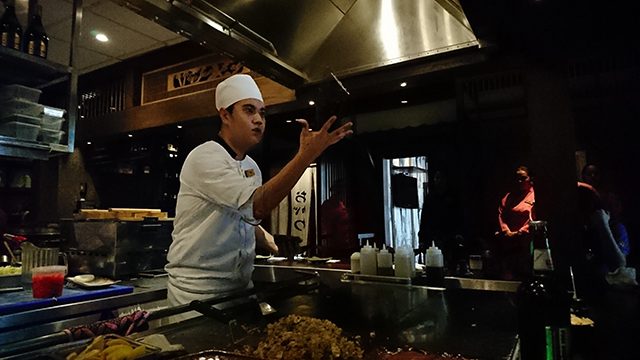
It’s good to know that one has the option to turn up the shutter speed if the aim is to freeze the action. Tucked inside the menus, you can also hike up the ISO setting manually too to brighten things up at the expense of image grain.

The sum of its parts
On to the other features. How does the XZ secure focus in spite of the dim surroundings? Sony says this has something to do with the camera’s laser-detect auto focus, which basically shoots a laser from the camera to the subject to measure the distance. The phone then uses that data to adjust the focus. Another phone that highlights its use of laser detection is Asus’ Zenfone Laser series.
Along with that, the XZ also uses phase-detect autofocus, a feature that Gizmodo notes may have been first seen on the Samsung Galaxy S5 and then later with the iPhone 6 and 6 Plus. It’s a system that’s generally faster than the more common contrast detection autofocus.
On the software end of things, the XZ is said to be equipped with predictive autofocus technology. The tech attempts to calculate the trajectory of a moving subject and adjusts the settings as needed to produce sharp photos.
While the Xperia XZ is not the first to employ laser autofocus and phase-detect, it’s the first Sony phone to adopt 5-axis image stabilization. The technology is also found in Sony’s semi-pro and pro cameras such as the A7 Mark II mirrorless series. Moving from Mark I to Mark II, 5-axis image stabilization was the big selling point because, in a nutshell, it kept things sharp even as you approach the slower shutter speeds. It’s an especially important feature for video shooters as the tech smoothens what would’ve been shaky video.
But before you start waving around the XZ like a madman, know that the tech has a limit: it can only compensate for camera shake to a certain extent. But yes, advanced image stabilization on a phone’s camera is very much appreciated.
On their own, these technologies have been seen before. But seemingly, it’s Sony that has meaningfully packaged them for the phone-photographer who’s into the active lifestyle – or who just wants to take photos of his or her rowdy golden retriever or playful kid.
The XZ’s rear camera has a resolution of 23 megapixels, and a front shooter with 13 megapixels. Sony says it goes from standby-to-capture in 0.6 seconds, and offers substantial storage (64GB). The model to be sold in the Philippines is dual-sim. Check the phone’s full specs on its official Sony page.
Those pre-ordering from October 21 to November 6 get a free USM-32SA3 32GB Sony USB To-Go worth P1,200, an Xperia smart case worth P1,790, and a 5,000 mAh Sony portable charger worth P1,390. – Rappler.com
Add a comment
How does this make you feel?
There are no comments yet. Add your comment to start the conversation.